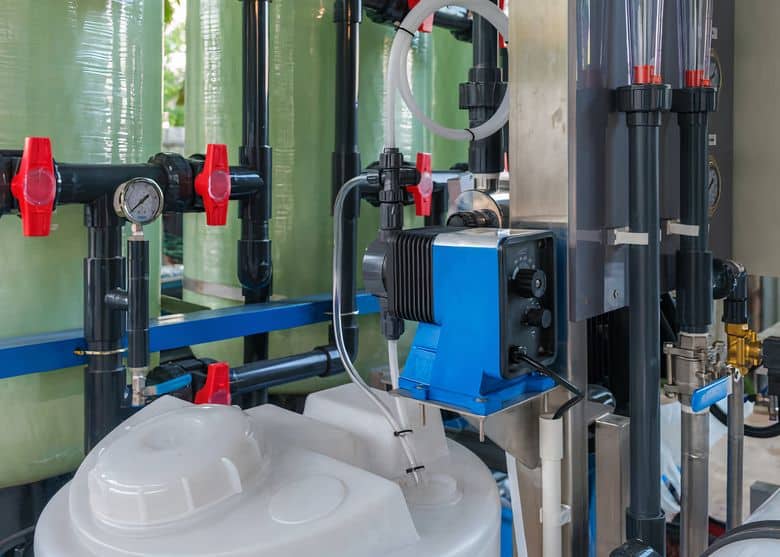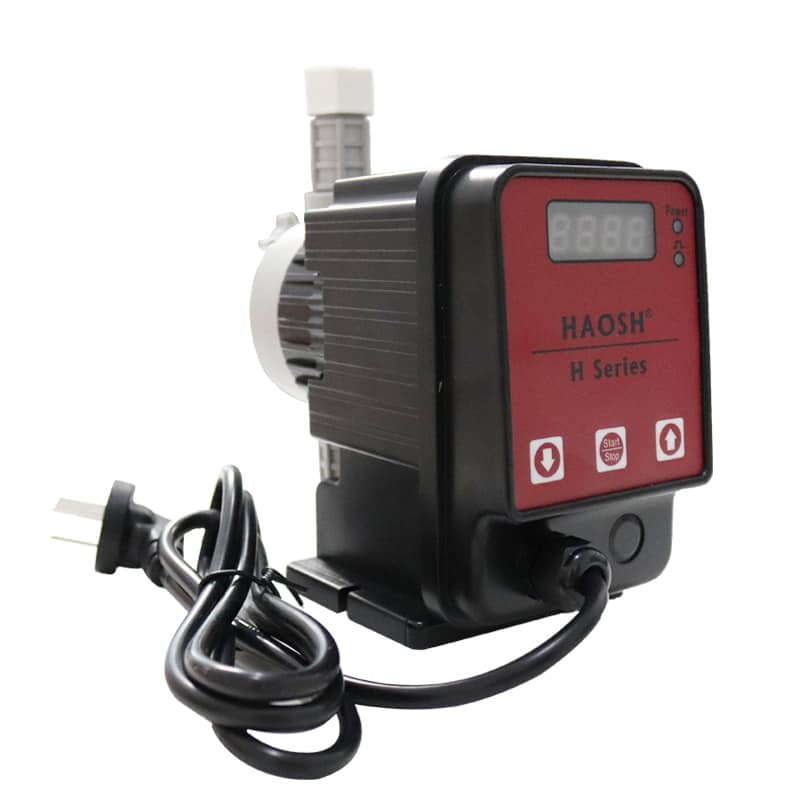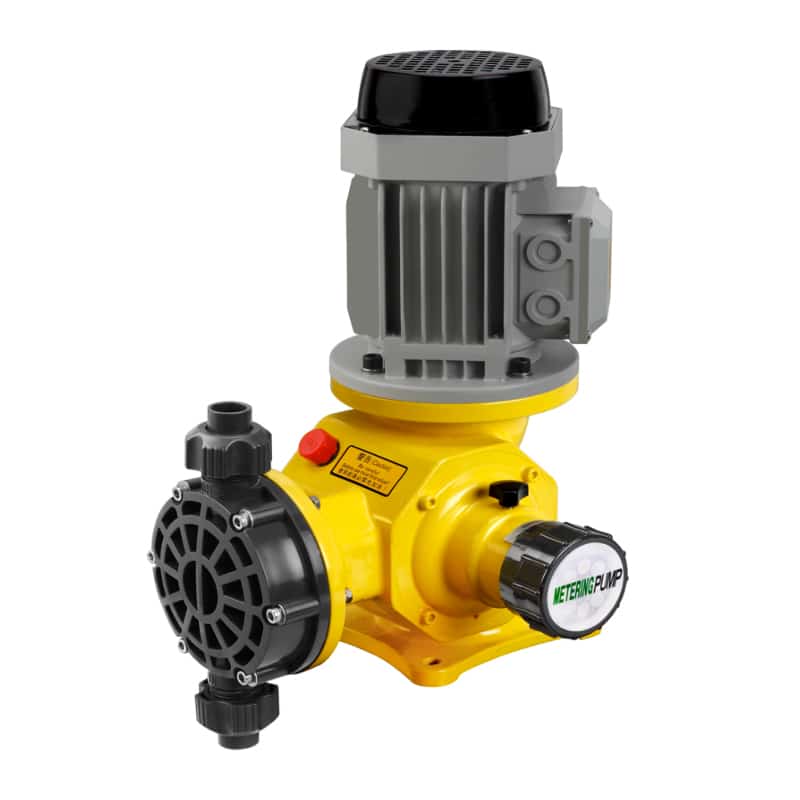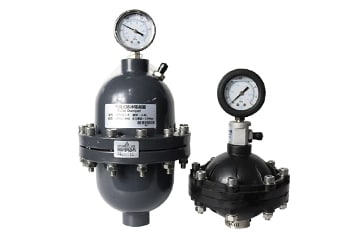Chemical Feed Pump

What is a chemical feed pump?
A chemical feed pump is a positive displacement pump that is used to inject a precise amount of chemical into a process stream. The pump is typically powered by an electric motor or air actuator. The most common types of chemical feed pumps are diaphragm pumps and piston pumps.
What does a chemical feed pump consist of?
- Pump body: The pump body is the housing for the pump mechanism. It is typically made from a corrosion-resistant material, such as stainless steel or plastics.
- Pump mechanism: The pump mechanism is responsible for moving the chemical solution through the pump. There are many different types of pump mechanisms, but the most common types are diaphragm pumps, piston pumps, and gear pumps.
- Valves: Valves are used to control the flow of the chemical solution through the pump. They are typically made from a corrosion-resistant material and are designed to withstand the high pressures and temperatures that can be generated by chemical feed pumps.
- Suction and discharge lines: The suction and discharge lines are the pipes that connect the pump to the process stream. They are typically made from a corrosion-resistant material and are designed to withstand the high pressures and temperatures that can be generated by chemical feed pumps.
- Motor or actuator: The motor or actuator is used to power the pump mechanism. It is typically made from a corrosion-resistant material and is designed to withstand the high temperatures that can be generated by chemical feed pumps.

The specific components of a chemical feed pump will depend on the type of pump mechanism and the application. However, the components listed above are some of the most common components that are found in chemical feed pumps.
Here are some additional components that may be found in chemical feed pumps, depending on the specific application:
- Solenoid valve: A solenoid valve is a type of valve that is controlled by an electric current. It is often used in chemical feed pumps to control the flow of the chemical solution.
- Timer: A timer is used to automate the operation of the chemical feed pump. It can be used to set the flow rate, pressure, and timing of the pump.
- Controller: A controller is a device that is used to monitor and control the operation of the chemical feed pump. It can be used to set the flow rate, pressure, and timing of the pump, as well as to monitor the pump’s performance.
Types of chemical feed pumps
- Diaphragm pumps: These pumps use a flexible diaphragm to move the chemical solution through the pump. The diaphragm is alternately flexed by a piston or plunger, which creates a pumping action. The HAOSH H Solenoid Dosing Pump is ideally suited for applications where chemical solutions are corrosive or abrasive.


- Piston pumps: These pumps use a piston to move the chemical solution through the pump. The piston is reciprocated by a motor or actuator, which creates a pumping action. Piston pumps can deliver higher pressures and flow rates than diaphragm pumps, but they are also more complex and expensive. The HJ-Z Mechanical Dosing Pump is an excellent choice.
- Gear pumps: These pumps use two gears to move the chemical solution through the pump. The gears mesh together, which creates a pumping action. Gear pumps are well-suited for applications where the chemical solution is viscous or contains solids.
- Peristaltic pumps: These pumps use a flexible tube to move the chemical solution through the pump. The tube is squeezed by rollers, which creates a pumping action. Peristaltic pumps are well-suited for applications where the chemical solution is sensitive to shear.
Sure, here is a table that shows the characteristic advantages and specific applications of the common types of chemical feed pumps:
| Type of Chemical Feed Pump | Characteristic Advantages | Specific Applications | Performance Parameters |
| Diaphragm pump | * Durable and reliable * Can handle corrosive and abrasive fluids * Self-priming * Quiet operation | * Water treatment * Wastewater treatment * Chemical manufacturing * Food processing | Flow rate: 0.5-500 L/h Pressure: Up to 20 bar Accuracy: ±2% |
| Piston pump | * High flow rates and pressures * Can handle high viscosity fluids * Accurate dosing | * Chemical dosing * Oil and gas production * Water treatment * Pharmaceutical manufacturing | Flow rate: 1-1000 L/h Pressure: Up to 100 bar Accuracy: ±1% |
| Gear pump | * Durable and reliable * Can handle high viscosity fluids * Quiet operation | * Water treatment * Wastewater treatment * Food processing * Chemical manufacturing | Flow rate: 0.5-200 L/h Pressure: Up to 15 bar Accuracy: ±3% |
| Peristaltic pump | * Gentle on fluids * Can handle sensitive fluids * Self-priming * Quiet operation | * Pharmaceutical manufacturing * Food processing * Water treatment | Flow rate: 0.1-150 L/h Pressure: Up to 8 bar Accuracy: ±5% |
Some common failures of chemical feed pumps and how to maintain them?
- Seal failure: This is a common failure of chemical feed pumps, especially in applications where the chemical solution is corrosive or abrasive. The seal can fail due to wear, tear, or chemical attack. To prevent seal failure, the pump should be regularly inspected and maintained. The seal flush system should also be properly maintained to ensure that the seal is properly lubricated.
- Packing failure: Packing is used to prevent leakage between the pump and the process stream. Packing can fail due to wear, tear, or chemical attack. To prevent packing failure, the pump should be regularly inspected and maintained. The packing should be replaced as needed.
- Cavitation: Cavitation occurs when the pressure of the liquid drops below the vapor pressure, causing bubbles to form. These bubbles collapse as they rise in the pump, creating shock waves that can damage the pump. To prevent cavitation, the pump should be properly sized and the flow rate should be maintained within the pump’s operating limits.
- Corrosion: Chemical feed pumps can be corroded by certain chemicals. To prevent corrosion, the pump should be made from a material that is resistant to the chemicals that will be used. The pump should also be regularly inspected and maintained to ensure that there are no signs of corrosion.
Some tips for maintaining chemical feed pumps
- Inspect the pump regularly: The pump should be visually inspected for signs of wear, tear, or damage. The pump seals and packing should also be inspected for signs of leakage.
- Clean and flush the pump: The pump should be cleaned and flushed according to the manufacturer’s instructions. This will help to remove any contaminants that could damage the pump.
- Replace worn or damaged parts: If any parts of the pump are worn or damaged, they should be replaced as soon as possible. This will help to prevent further damage to the pump.
- Follow the manufacturer’s instructions: The manufacturer’s instructions should be followed carefully to ensure that the pump is properly operated and maintained.

Examples of equipment typically used with chemical feed pumps
- Dosing valves: Dosing valves are used to control the flow rate of the chemical solution. They are typically made from a corrosion-resistant material and are designed to withstand the high pressures and temperatures that can be generated by chemical feed pumps.
- Pressure gauges: Pressure gauges are used to monitor the pressure of the chemical solution. They are typically installed in the suction and discharge lines of the pump to ensure that the pump is operating within its operating limits.
- Flow meters: Flow meters are used to measure the flow rate of the chemical solution. They are typically installed in the discharge line of the pump to ensure that the correct amount of chemical is being added to the process stream.
- Controllers: Controllers are used to automate the operation of the chemical feed pump. They can be used to set the flow rate, pressure, and timing of the pump.
- Safety devices: Safety devices are used to protect the pump and the process stream from damage. They can include pressure relief valves, temperature sensors, and flow switches.
- Suction filters: Suction filters are used to remove contaminants from the chemical solution before it enters the pump. This helps to protect the pump from damage and ensures that the chemical solution is clean.

- Pulse dampeners: Pulse dampeners are used to reduce the pressure pulsations that can be generated by chemical feed pumps. This helps to protect the pump and the process stream from damage.
- Calibration columns: Calibration columns are used to verify the accuracy of the chemical feed pump. They are typically filled with a known amount of chemical solution and the flow rate of the pump is measured.

Some of the benefits of using chemical feed pumps
- Accurate dosing: Chemical feed pumps can be used to precisely dose the amount of chemical added to a process stream. This is important for ensuring that the process is operating correctly and that the chemical is not being wasted.
- Consistency: Chemical feed pumps can be used to consistently dose the amount of chemical added to a process stream. This is important for ensuring that the process is operating consistently and that the product quality is maintained.
- Reliability: Chemical feed pumps are typically reliable and can operate for long periods of time without requiring maintenance.
Some limitations of using chemical feed pumps
- Cost: Chemical feed pumps can be more expensive than other types of pumps.
- Complexity: Chemical feed pumps can be more complex than other types of pumps, which can make them more difficult to maintain.
- Corrosion: Chemical feed pumps can be corroded by certain chemicals, so it is important to select a pump that is made from a material that is resistant to the chemicals that will be used.
Summary
In conclusion, chemical feed pumps play a key role in chemical production, which can ensure the stability and safety of the chemical process and improve production efficiency.
HAOSH is a water treatment dosing and metering expert, offering Dosing Metering Pump, Pump Accessories, Mixer Agitator and Dosing System, through years of industry accumulation, we strive to bring China’s good water treatment products to the world. Welcome to contact us anytime.
